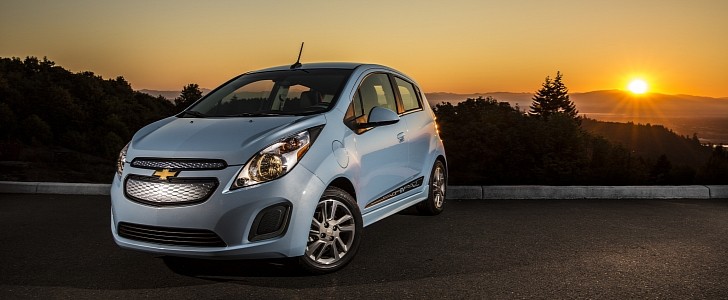With all the hype around electric vehicles, very few people seem to consider that these cars will eventually age. When they do, some of their core components will have to be replaced to keep them working, such as their battery packs. Either you do that, or you condemn to the junkyard a vehicle that could still run without polluting the air. We already have some cautionary tales about that, but the Chevy Spark EV may give us the most important to date.
Sold from June 2013 until 2016, it never reached massive numbers and was restricted to a few thousand units per year. Despite being a compliance vehicle, it has faithful owners who will now be left with no option other than independent shops or the garbage: EV-Resource discovered that GM is no longer manufacturing its battery packs.
With a warranty of eight years or 100,000 miles (160,934 kilometers), Spark EVs started losing coverage in June 2021. By 2024, none of them will be covered anymore. Those still protected by these legal terms cannot celebrate: GM is simply buying back the vehicles that present battery pack failures.
EV-Resource talked to Rich Benoit, who started The Electrified Garage with some partners precisely to keep EVs running. According to the YouTuber, even independent shops will have a hard time with Spark EVs because it is complicated to find used battery packs for them. Benoit recreated a Domino’s DXP – a dedicated pizza delivery Spark with a combustion engine – with a used Spark EV. That puts him right among the people affected by GM’s decision.
Like the Chevy hatchback, some other low-volume electric vehicles will face the same problem sooner or later. Think about the Fiat 500e or the smart fortwo electric. When they start to fail, it will be cheaper for their manufacturers to repurchase them than to sell new battery packs. If they are still under warranty, mind you. When it is over, those folks are on their own.
Supposing Stellantis or Mercedes-Benz were willing to sell the battery packs, they would cost way more than the vehicles, making the repair less than advisable from a financial point of view. This is something we already see happening with the Nissan LEAF and Tesla vehicles, which are way more popular than the Spark EV ever was.
In the current environment, electric vehicles are destined to last way less than combustion-engined cars. That kills the idea that they are helping to save the world. By stimulating customers to buy new EVs whenever their cars lose their battery packs, these automakers are increasing raw material consumption, and the volume of junk humans generate.
What may save early adopters is that they tend to be always after the next big thing, selling their vehicles more often than most people. The ones buying their EVs are the ones who should take notes and avoid being caught off guard.
With a warranty of eight years or 100,000 miles (160,934 kilometers), Spark EVs started losing coverage in June 2021. By 2024, none of them will be covered anymore. Those still protected by these legal terms cannot celebrate: GM is simply buying back the vehicles that present battery pack failures.
EV-Resource talked to Rich Benoit, who started The Electrified Garage with some partners precisely to keep EVs running. According to the YouTuber, even independent shops will have a hard time with Spark EVs because it is complicated to find used battery packs for them. Benoit recreated a Domino’s DXP – a dedicated pizza delivery Spark with a combustion engine – with a used Spark EV. That puts him right among the people affected by GM’s decision.
Like the Chevy hatchback, some other low-volume electric vehicles will face the same problem sooner or later. Think about the Fiat 500e or the smart fortwo electric. When they start to fail, it will be cheaper for their manufacturers to repurchase them than to sell new battery packs. If they are still under warranty, mind you. When it is over, those folks are on their own.
Supposing Stellantis or Mercedes-Benz were willing to sell the battery packs, they would cost way more than the vehicles, making the repair less than advisable from a financial point of view. This is something we already see happening with the Nissan LEAF and Tesla vehicles, which are way more popular than the Spark EV ever was.
In the current environment, electric vehicles are destined to last way less than combustion-engined cars. That kills the idea that they are helping to save the world. By stimulating customers to buy new EVs whenever their cars lose their battery packs, these automakers are increasing raw material consumption, and the volume of junk humans generate.
What may save early adopters is that they tend to be always after the next big thing, selling their vehicles more often than most people. The ones buying their EVs are the ones who should take notes and avoid being caught off guard.















